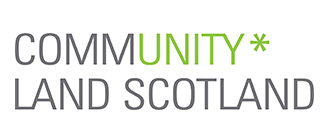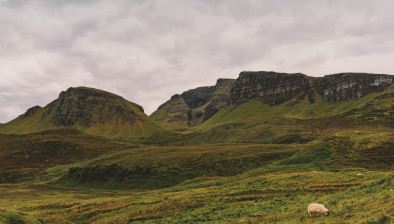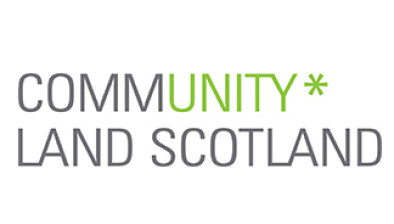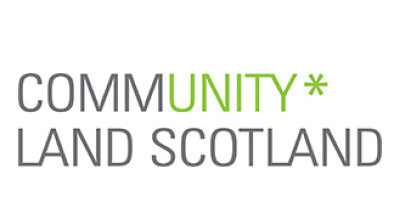Community Land Scotland calls for access to safe and warm housing at affordable prices
 Community Land Scotland (CLS) has called for access to safe and warm housing at prices local people can afford as it publishes its new report on community-led housing today.
Community Land Scotland (CLS) has called for access to safe and warm housing at prices local people can afford as it publishes its new report on community-led housing today.
The report, Home Delivery – Community Led Housing in rural Scotland, charts the success of the very many rural communities who have bought the land and raised the funds to build the required affordable housing over the last five years of the Scottish Government’s Rural and Islands Housing Fund.
Community Land Scotland is calling for that fund to continue beyond March 2021 when its current version is due to end.
Ailsa Raeburn, chair of Community Land Scotland, said: “For too long people have been leaving villages and small towns across rural Scotland, because they could not find a house they could afford to live in, or were repeatedly evicted.
“In the fight against such depopulation, communities the length and breadth of rural Scotland have been coming together to build and manage their own affordable housing.”
These homes are low cost, highly energy efficient which means low heating bills, and aimed at helping people stay in their local area, and attracting back local people to return home, particularly young families.
Ms Raeburn added: “This type of development is always about more than numbers – whether the size of the community or the number of houses built. We have seen time and again that a very small number of houses can make a huge difference to our most economically fragile rural communities. Community housing is an integral part of empowering communities and that is fundamentally about ensuring that land and other assets are owned and used in the public interest and for the common good.”
Housing Minister Kevin Stewart commented: “It has been inspiring to read more stories of rural communities coming together to build affordable, energy-efficient homes that offer tenants and owners long-term housing security.”
“Many have had the support of the £30 million Rural and Islands Housing Funds. This is part of our record investment of more than £3.5 billion over this parliamentary term that funds our Affordable Housing Supply Programme, which has delivered around 4,800 affordable homes in these communities over the past four years.”
The development of two houses at Ulva Ferry on Mull brought two young families to that community, four working age residents and six children to the local school. The school stayed open and equally importantly the community was given the confidence to go on and build four more affordable houses which are now under construction and being advertised to let.
Three passivhaus-designed homes in Closeburn, Dumfries and Galloway are the first to be community owned in Scotland. Such houses are completely airtight, heavily insulated using very little energy for heating and cooling. This is important in an area with high levels of fuel poverty. Nith Valley LEAF Trust hope their model might be used elsewhere in Scotland.
Ms Raeburn continued: “access to safe and warm housing at prices local people can afford is a real issue in lots of parts of Scotland. In rural areas, especially popular holiday destinations, increasing numbers of houses are being turned into holiday homes and short-term lets. This new report by David Ross highlights the devastating personal impact this can have, with local youngsters living in caravans for years and young families being evicted multiple times. Community landowners are seeing this on their doorstep and are committed to finding a solution.”
Andrew Thin, chair of the Scottish Land Commission told CLS in the report: “With large housebuilders largely inactive in rural Scotland we need to support other providers and promote new delivery models. Support organisations have a vital role to play here. Scotland has the skills needed to do this and they need to be brought together from across the sector to effectively deliver the housing.”
The 205 new homes listed in the report from all across Scotland showcase a range of community led developments all supported by the Scottish Government’s Rural and Islands Housing Fund. They include many completed homes, a health centre and business units in Staffin in Skye and the refurbishment of a derelict hotel site In Whithorn, Dumfries & Galloway to create four family homes. A further 200 houses are now in the pipeline in some of the most remote and fragile communities in Scotland.
Kevin Stewart added: “Each of these new homes can have a significant impact. For example, the Rural and Islands Housing Funds supported a 12-house development in the village of Drumnadrochit that has allowed older residents to live independently, with support from a nearby day centre – an inspiring project created by the community themselves.
“The Scottish Land Commission recently described the Rural and Islands Housing Funds as ‘game changers’, and Mr Ross’s research further shows just how much the funds have helped to facilitate housing development in rural Scotland.”
Hugh Ross, the writer of the report, is from the Staffin Community Trust at Trotternish on Skye. The island with a population of 10,000 has particular pressure on its housing stock. Research for the Scottish Government last year found that almost 20% of all dwellings on Skye were available for holidays through Airbnb. He said: “some 23 townships make up the district of Staffin. You could argue the loss of 40 people amounted to the one whole township leaving.”
“We refused to sleepwalk into becoming a retirement village dominated by holiday accommodation. Our project would have not happened without the Rural and Islands Housing Fund. It is a project that is vital to Staffin as we haven’t had affordable houses here for 21 years. This development will see seven families secure homes, bolster our schools roll, provide a modern heath centre and new business opportunities in Skye and Lochalsh’s most economically fragile community. The sound of children playing in the gardens will be a very welcome noise – that of a community with a bright future.”








